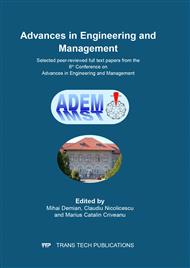p.3
p.9
p.15
p.25
p.31
p.37
p.47
p.55
Quality Concept - Applicable Aspects for Management of Research Projects
Abstract:
The notion of quality is defined as the totality of the attributes and essential aspects by virtue of which one is what it is, distinguishing itself from the other things. The article has as its starting point the definition of quality according to SR EN ISO 9001:2015. This standard defines the quality like „the set of properties and features of a product or service that gives it the ability to meet the expressed and implied needs of the customers”. Our article treats three categories of expressed and implicit necessities: the expressed and implied needs of clients, as beneficiaries of Products/Work/Services (P/W/S); the expressed and implied necessities of an efficient production management; the expressed and implicit necessities of society as a whole. In the article we present and analyze the components of quality (decalogue of quality) and the correlations between them. The quality term involves two main aspects (components), namely: utility, expressed by degree of utility (this component quantifies the extent to which the P/W/S meets the customer's needs and consequently sells). Technical component (intrinsic), which refers strictly to the technical characteristics of P/W/S. It is obvious that there is mutual dependence between the two components of the concept of quality (biunivoc).
Info:
Periodical:
Pages:
3-8
Citation:
Online since:
September 2021
Keywords:
Price:
Сopyright:
© 2021 Trans Tech Publications Ltd. All Rights Reserved
Share:
Citation:


